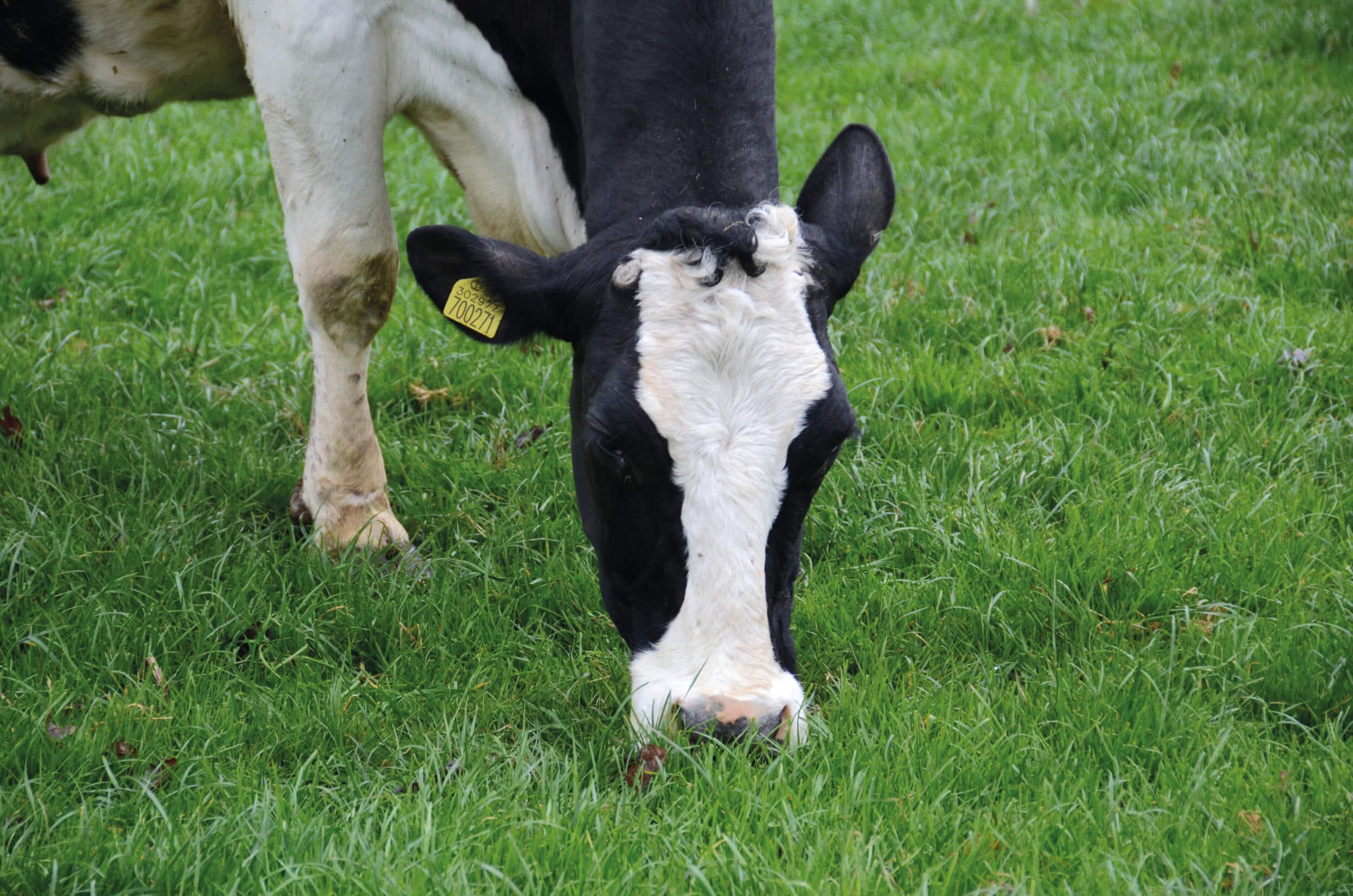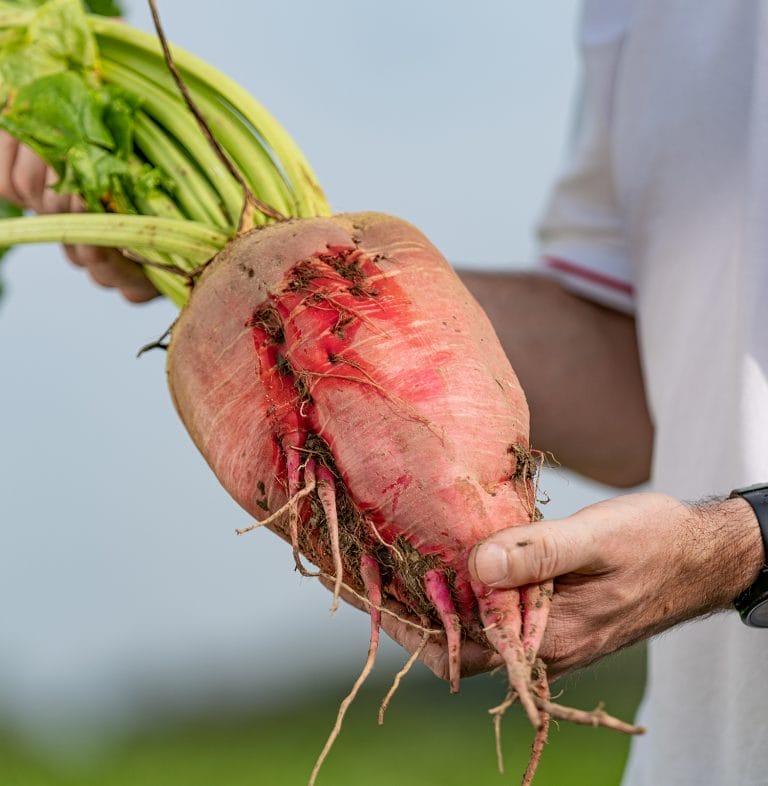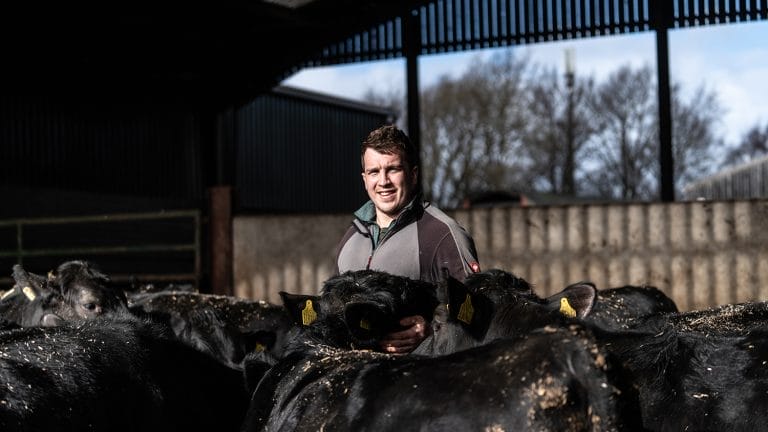Growing a crop like maize and leaving the field fallow for at least six months is like having an empty factory for half a year. And that’s before considering the environmental impact, from soil run off and the loss of nutrients from the soil, when maize fields are left fallow.
“So combining maize with another crop, like grass, to increase its output, while helping to retain soil and nutrients, aid drainage and improve soil structure makes good sense,” says Limagrain’s forage crop manager John Spence.
“But we have to be careful that maize yields are not compromised by the grass. And additional cultivations and passes across the field must be efficient and cost-effective.”
There are some possible options that can support maize crops while increasing land productivity and avoiding environmental issues.
Three include: drilling maize and grass at the same time, with the grass spaced in rows that are at least 15cm away from the maize; drilling grass into the maize crop once the maize has reached the six-leaf stage, after about six weeks; or follow maize with a forage rye, grass reseed or a winter cereal crop.
The first, drilling maize and grass at the same time, is preferable, according to South Staffs Water (SSW) senior catchment adviser Nina Yiannoukos-Benton. “Because this minimises the number of passes and helps to protect soil structure and nutrient retention.
 “Some producers may be concerned that the grass could compete and compromise maize yield, but in the trials we’ve carried out on commercial dairy units, they’ve actually seen increased crop performance.
“Some producers may be concerned that the grass could compete and compromise maize yield, but in the trials we’ve carried out on commercial dairy units, they’ve actually seen increased crop performance.
“The grass ‘stays in its lane’, so to speak, only spreading once the maize has been harvested and providing a good cover crop for winter.”
Mr Spence says it’s key, if this is the chosen option, to select early maturing maize varieties and slow growing (low yielding) grass seed mixtures to avoid grass competing with the maize in the early growth stage.
Limagrain has been working with SSW on developing a mixture that creates a ‘carpet’ effect, but is also palatable.
And maize varieties with good early vigour that are typically harvested by late September/early October, gives grass the chance to grow, take up nutrients, and develop a good root system to ‘bind’ the soil.

Mrs Yiannoukos-Benton prefers undersowing the grass at the same time as the maize. “Because multiple passes can create soil compaction issues.
But, drilling once the maize is established is an option if producers are concerned about maize yields, and it also enables higher yielding grass varieties to be grown, if that’s their preference.”
This option relies on good sowing conditions for grass. And again, early maturing maize varieties are ideal so there’s still enough warmth and light for some grass growth once the maize is harvested, ensuring the ‘companion’ crop can play its environmental role and provide a green cover.
Success really depends on the grass mixture drilled alongside the maize.
“It can’t compete with, or comprise, the maize crop. And it also needs to be a valuable feed in its own right – offering some late-season grazing for dry cows and young stock, or even milkers,” adds Mr Spence.
So grass mixture choice is crucial. “It has to quickly establish and grow in the dry environment caused by the maize crop. But it’s a fine line – too fast and it will compete with the maize crop, resulting in yield loss.”
For sowing at the same time as maize he recommends a high proportion of amenity-type tall fescues in the grass mixture, to provide some drought tolerance and the ability to survive well when sown at the same time as the maize.
For sowing at the six leaf stage he suggests a proportion of tall fescue type festuloliums (a cross between tall fescue and Italian Ryegrass) and Matrix (a meadow fescue type festulolium).
“But make sure seed rates are not too high. Good agronomy advice and careful drilling – with the correct equipment – is key.”
Grant schemes
There are environmental schemes to encourage producers to consider a second crop to reduce pollution from maize land.
Countryside Stewardship SW5 is an option, with payments of £133/hectare for mid and higher tiers. Applicants must satisfy criteria that stipulate harvesting maize by October 1 and establishing a quick-growing cover crop, by October 15, which will provide a dense cover and protect the land from soil erosion.
SSW has a grant scheme for producers in its high-risk catchment areas and offers £150/hectare towards the cost of growing maize that’s undersown with grass.
The grants are available under its SPRING environmental protection scheme, set up to help producers reduce soil run off and pollution.
One Staffordshire-based dairying couple has been trialling maize undersown with grass for the past two years and are about to start their third year in the scheme.
Becky and Trevor Mycock grow 90 hectares of maize to feed their 400-cow herd and 48 hectares of it was undersown with a grass mixture in 2020.
“Local contractor Rob Moore used an adapted drill – a prototype that’s been developed in conjunction with SSW – that sows both crops at once. This removes the need for additional cultivations, which reduces the risk of compaction and other soil structure and fertility issues,” says Mrs Mycock.
The couple grew 60 hectares of maize in 2019, the first year they took part in the SSW trials, and a third of it was undersown with grass, using a Pottinger maize drill that is owned by another local contractor.
“Our biggest concern was whether the grass would reduce maize yield. But our big gamble paid off. We actually saw more maize freshweight yield per hectare from the undersown fields,” she adds.
“And forage quality was unaffected. We were also able to graze some dry cows and young stock on the maize ‘aftermath’ and the grass also provided a good cover crop during the winter between maize crops.”
The Mycocks grow a mixture of early and later maturing maize varieties. “Both have done well. And we’re also looking at trialling a different grass mixture this year – one developed in conjunction with Limagrain – that should improve the palatability of the sward.”
During the past two years they have seen good establishment of both the maize and the grass, even though the seasons have been wetter than usual. “We have also seen some excellent maize yield results.”
Mrs Mycock adds that, typically, the maize freshweight yield is five tonnes per hectare higher for the undersown crops – averaging 42t/hectare compared to 37t/hectare for straight maize. “Our experience certainly allayed any concerns that the grass could compromise maize growth and development,” she says.
Maize has a reputation for being environmentally damaging. “But we recognise that it is an essential part of many producers’ dairy production system,” says Mrs Yiannoukos-Benton.
“So we looked at a way to undersow the maize with grass to offer green cover during the winter. This is when land is at high risk from nutrient and sediment losses to watercourses and, with this dual-sowing approach, we have reduced losses dramatically.”
Other producer who are also involved in trials reported that harvesting the maize crop is also easier and ‘cleaner’. “The grass acts like a carpet, keeping mud to a minimum and allowing access to what may otherwise be inaccessible fields,” adds Mrs Mycock. “I can honestly say that without the undersown grass we may not have been able to harvest a lot of our maize in 2019, because it was just too wet.”
“If that’s not an incentive to give it a go, particularly after the exceptionally wet autumns of 2019 and 2020, I don’t know what is.”

































